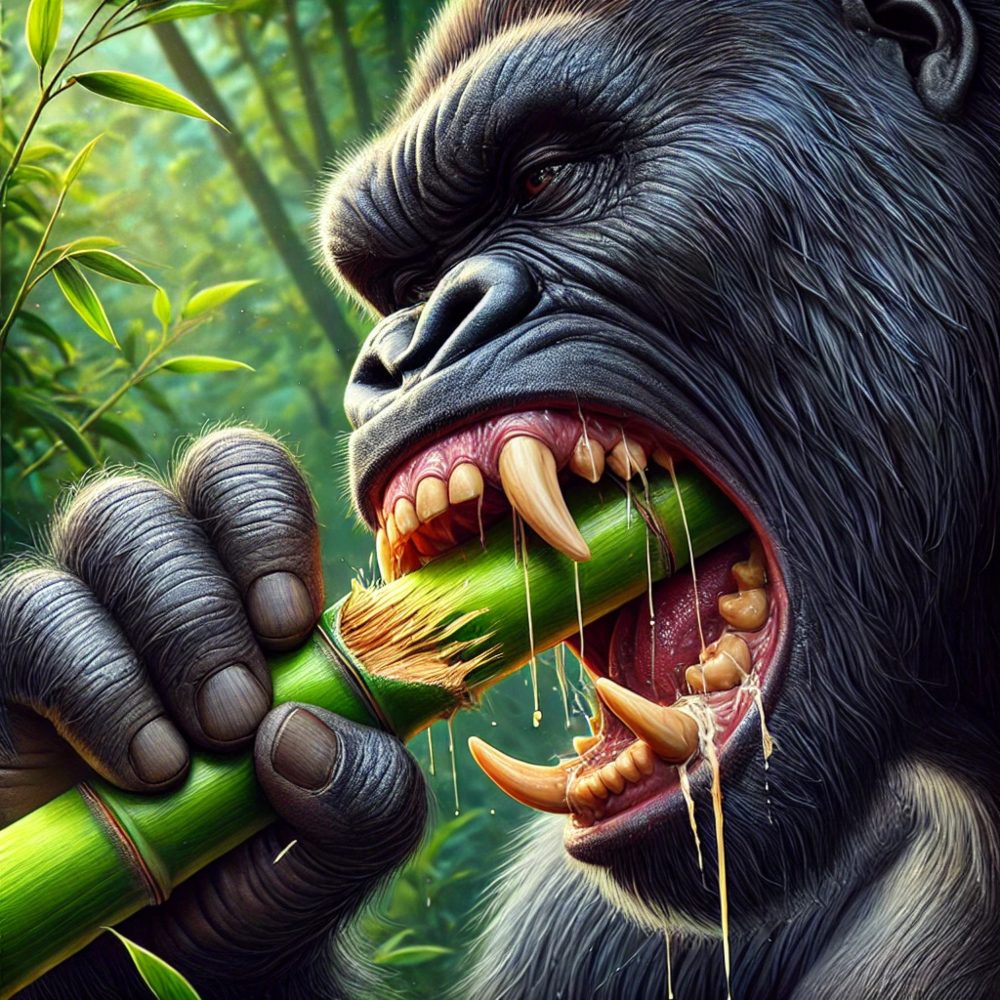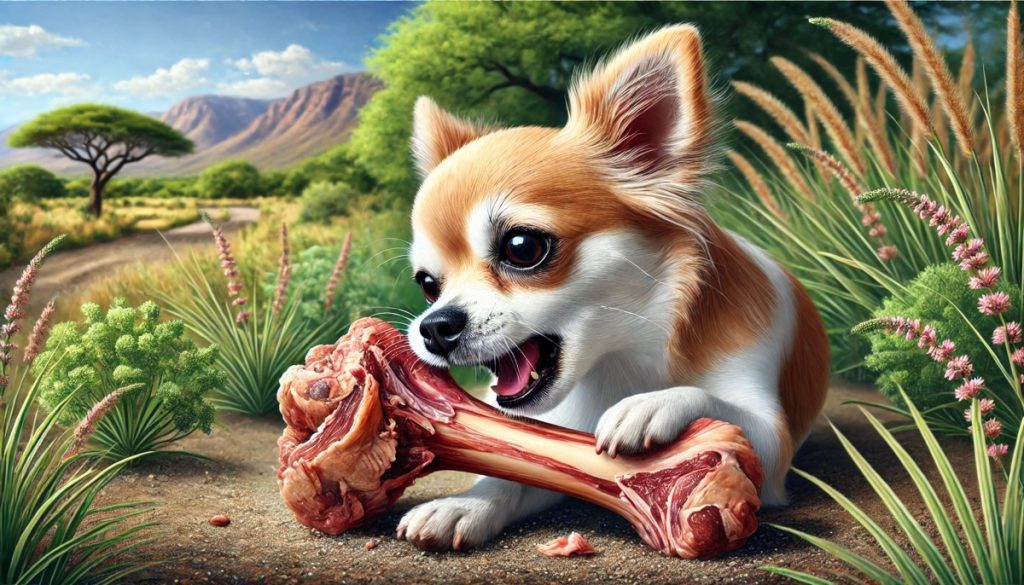I was watching my two small dogs chewing on their favourite snack earlier this afternoon. Every second day they get a small, raw, pork bone that is cut from the spine. In less than 30 minutes, the dogs, a chihuahua and a chi-maltese cross, manage to consume at least 90% of their treat.
They start by carefully extracting the meat and cartilage. Then they start demolishing the bone. They make it look so easy and yet – even though I know teeth are 8x harder than concrete, I can’t imagine having the bite force to be able to crush a bone.
And that train of thought led me down the ‘bite-force rabbit hole’. Humans have a bite force of 160 PSI. What do dogs have and does it vary much between breeds? What about other species?
Contents
Bite Forces Showdown: Crocodiles, Lions, and Beyond
Assuming I’m not the only person who has ever pondered the same question while watching the ‘dog at a bone’ scenario, I thought I’d share what I found…
Exploring the Strongest Bites in the Animal Kingdom
- Nile Crocodile (3,700 PSI)
The Nile Crocodile holds the title for the most powerful bite force recorded in the ‘land dwelling’ animal kingdom. Their jaws are built for gripping and tearing flesh, and they can apply a staggering 3,700 pounds per square inch (PSI). This immense force is crucial for subduing prey and breaking through tough hides and bones. - Saltwater Crocodile (3,690 PSI)
Close on the heels of the Nile crocodile, the saltwater crocodile isn’t far behind with a bite force of around 3,690 PSI. These apex predators use their incredible jaw strength to capture and dismember prey with ease, often using a “death roll” to tear chunks of flesh. - American Alligator (2,980 PSI)
Another reptilian powerhouse, the American alligator, has a bite force of 2,980 PSI. This strength allows them to crush turtles and other hard-shelled prey effortlessly, a vital adaptation for their survival in the wild. - Hippopotamus (1,800 PSI)
Despite their herbivorous diet, hippos have a remarkable bite force of 1,800 PSI. Their large canines and incisors are used primarily for defense and territorial disputes, making them one of the most dangerous animals in Africa. - Jaguar (1,500 PSI)
The jaguar boasts the strongest bite of any big cat, measuring at 1,500 PSI. This formidable bite allows jaguars to pierce the skulls of their prey, which includes mammals, reptiles, and even caimans, a unique hunting adaptation among big cats. - Grizzly Bear (975 PSI)
Grizzly bears have a bite force of 975 PSI, which they use to crush through bones and tough skin of their prey, such as elk and moose. This strength is also handy when foraging for food, like cracking open nuts or accessing buried caches. - Spotted Hyena (1,100 PSI)
Known for their bone-crushing abilities, spotted hyenas have a bite force of 1,100 PSI. Their powerful jaws allow them to consume almost every part of their prey, including bones, which provides essential nutrients. - Lion (650 PSI)
The lion’s bite force measures around 650 PSI, sufficient to bring down large prey such as zebras and buffaloes. Lions rely on their strong jaws to suffocate their prey by clamping down on the throat.
And then there is the bite force of marine animals which is not (apparently) particularly well researched, but…
And then there’s ‘The Deep’…
- Killer Whale (19,000 PSI)
The killer whale, or orca, possesses an astonishing bite force of up to 19,000 PSI, making it one of, if not the, most powerful biter in the animal kingdom. This incredible strength allows orcas to tackle a wide range of prey, from seals and sea lions to even large whales. Add the fact that killer whales hunt in packs and it’s safe to conclude that they are the absolute apex predator! - Great White Shark (4,000 PSI)
Although not a land animal, the great white shark deserves mention for its incredible bite force of up to 4,000 PSI. This allows the shark to tackle large prey, including seals and dolphins, often delivering a single, fatal bite.
And then we come to our family – the Primates:
- Gorilla (1,300 PSI)
Gorillas have a bite force of about 1,300 PSI. Their powerful jaws and large molars are designed for chewing tough vegetation, including stems and bamboo. This strong bite also aids in self-defense and intraspecies combat. - Chimpanzee (500-550 PSI)
Chimpanzees have a strong bite force that helps them consume a variety of foods, including fruits, nuts, and occasional meat. - Baboons (500 – 550P PSI)
Baboons have a bite force comparable to chimpanzees. Their sharp canine teeth, which can grow up to 6 inches long, are crucial for defense and dominance displays. Their diet includes tough roots and nuts, necessitating a strong bite force. - Human (160 PSI)
Humans have a comparitively modest bite force of 160 PSI. Despite being omnivores, our diet and cooking practices have reduced the need for a powerful bite. However, our jaw strength is still significant enough to handle a wide variety of foods. As you’ll read below, that’s supposedly a higher bite force that my two dogs posess but I still can’t see myself devouring a pork bone!
Dogs and Their Bite Force
Dogs, domesticated for thousands of years, display considerable variation in bite force across breeds. The bite force of dogs generally ranges from 200 to 700 PSI, depending on the breed and size of the dog.
- Kangal (743 PSI): This breed is renowned for having one of the strongest bites among domesticated dogs. Originally bred to protect livestock, their powerful bite aids in fending off predators.
- Rottweiler (328 PSI): Known for their strength and guarding instincts, Rottweilers have a robust bite force that complements their protective nature.
- American Pit Bull Terrier (235 PSI): Despite their reputation, Pit Bulls are not the strongest biters but still possess a formidable bite force.
- German Shepherd (238 PSI): Often used in police and military roles, their bite is strong enough to subdue suspects and provide security.
- Chihuahua (100 PSI): Even small breeds like Chihuahuas have surprisingly strong bites relative to their size, useful for their survival in the wild before domestication.

The Truth About Cat Bite Forces
Domestic cats, although generally not as strong as dogs in terms of bite force, still possess powerful bites relative to their size, adapted for hunting and defense.
- Domestic Cat (70 PSI):
Domestic cats, though much smaller than dogs, have sharp, shearing teeth that allow them to efficiently process small prey. Of course, their bigger realives tell a different story. - Canadian Lynx (635 PSI):
Despite being smaller than cougars, these medium-sized cats have no trouble catching and devouring prey, especially snow hares. - Cheetah (475 PSI):
Compared to other ‘big cats’ that’s a fairl weak bite force but a cheetah’s hunting style involves targetting and running down smaller animals like gazelles and then using their bite to choke it. - Tiger (1,050 PSI):
Tigers sit at the apex of the cat bite force tree having enough pressure to take down large animals like deer, wild boar and even adult oxen!
The variation in bite force among all species can be attributed to their dietary needs and ecological niches. For predators like crocodiles and jaguars, a powerful bite is essential for capturing and subduing prey. Scavengers like hyenas need strong jaws to break down bones and extract maximum nutrients. Herbivores like hippos and gorillas use their bite force to process tough plant material, while apex predators like sharks and orcas require it to catch and consume large marine animals.
The Takeaway
An animal’s bite force is closely linked to its feeding habits and survival strategies. The stronger the bite, the better adapted the animal is to thrive in its environment, whether that involves hunting, defense, or foraging. But, because we humans have long since lost the abilty to kill a mastadon and gnaw on a shin bone or two, we manage to get by on just 160 PSI!
But that still leaves me wondering how my five kilogram chihuahua manages to crush that pork bone!!!
And have you ever wondered why your dog sometimes stares at you with a very confused look his or her face? Here are 10 things you probably do that really confuse your furry pal…



